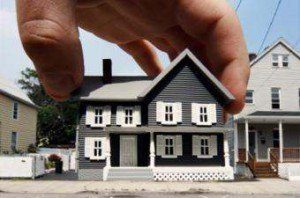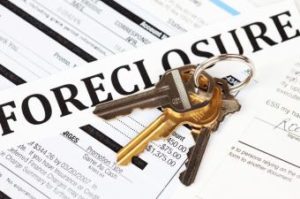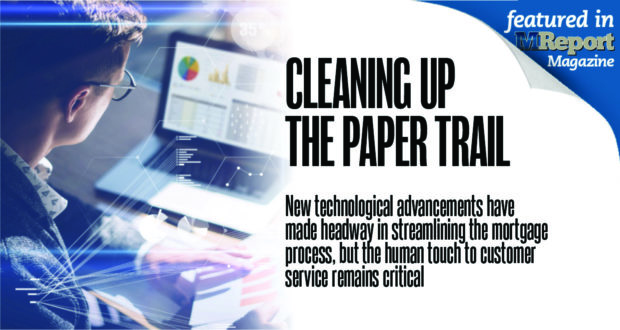HSBC Next to Pay Reparations for Pre-Crisis Conduct
 HSBC will be paying a $765-million fine to the Department of Justice, as representative of the United States, over its contributions from the bank that lead up to the 2008 housing and financial crisis. The details of the settlement were reported in the bank’s second-quarter earnings report, relating to RMBS transactions occurring between 2005 to 2007.
HSBC will be paying a $765-million fine to the Department of Justice, as representative of the United States, over its contributions from the bank that lead up to the 2008 housing and financial crisis. The details of the settlement were reported in the bank’s second-quarter earnings report, relating to RMBS transactions occurring between 2005 to 2007.
Under the section titled “US mortgage securitisation (sic) activity and litigation” within the earnings report, it was stated that the settlement-in-principle was reached to resolve the DoJ’s civil claim “relating to its investigation of HSBC’s legacy RMBS origination and securitisation (sic) activities from 2005 to 2007.”
The details of the settlement were described as “subject to the negotiation of definitive documentation,” with the caveat that there is no assurance the two entities will agree on final documentation. From 2005 to 2007, HSBC Bank USA purchased and sold about $24 billion worth of loans to HSBC Securities (USA) Inc., which were subsequently securitised and sold by HSI to third parties. “In addition,” the statement continued, “HSI served as an underwriter on securitisations issued by HSBC Finance Corporation or third parties, and HSBC Bank USA served as trustee on behalf of various mortgage securitisation trusts.”
The bank reported pre-tax profits of $6 billion for the three months ending June 30, up 13 percent in year-over-year comparison. Revenue for this same period rose around 1.5percent to $13.7billion, despite what was reported as yet another difficult period for its trading division.
“In June this year, I announced eight strategic priorities for the bank between now and 2020,” John Flint, Group Chief Executive said. “These have two aims—to get HSBC back to growth and to create value. We will seek to achieve these aims by increasing returns from the Group’s areas of strength, particularly in Asia and across our network; turning around low-return businesses of high strategic importance, particularly in the United States; investing in building a bank for the future with the customer at its centre; and making it easier for our colleagues to do their jobs.”
oes Parental Wealth Impact Homeownership?
 Parents pass a lot of traits on to their children: perhaps their eye color, an affinity for a particular sport or hobby, and maybe even their work ethic. However, now there is evidence that parents also pass another trait on to their grown children: their odds of homeownership.
Parents pass a lot of traits on to their children: perhaps their eye color, an affinity for a particular sport or hobby, and maybe even their work ethic. However, now there is evidence that parents also pass another trait on to their grown children: their odds of homeownership.
“We now know that a family habit of homeownership is passed down among generations,” stated researchers from the Urban Institute in a recent blog post.
“Whether your parents are homeowners influences whether you’ll be a homeowner,” the researchers said. Furthermore, “your parents’ wealth influences your future homeownership status.”
And the difference isn’t subtle.
The likelihood of being a homeowners increases 8.4 percentage points for millennials whose parents own homes when controlling for race, education level, and incomes. Without controlling for such factors, the gap widens to 17 percentage points.
For the millennial generation, the homeownership rate for those whose parents are homeowners is 31.7 percent. Among those whose parents are renters, the rate is just 14.4 percent, according to the research.
When it comes to wealth, a 1 percentage point increase in parental wealth correlates to a 0.009 percentage point increase in the likelihood of a young American owning a home.
For millennials whose parents have less than $10,000 in net worth, the rate is 14.14 percent. For those whose parents have $300,000 in net worth, the homeownership rate is 36.39 percent.
While the researchers said they “don’t know exactly how homeownership or wealth affects adolescents,” they suggested this influence is important. When it comes to owning a home, there exists a growing gap between different races in the United States “even as our nation becomes increasingly diverse.” This new evidence of a generational link suggests this gap will widen over time.
Among young Americans, white households have a 37 percent homeownership rate. The rate is 27 percent for Asians, 25 percent for Hispanics, and 13 percent among black millennials.
White parents have a homeownership rate of 84 percent, while homeownership among Hispanic parents is 64 percent. Black parents have a 48 percent homeownership rate.
Wealth is also lower among minority families than for white families. The research found the median net wealth for white parents of millennials was $171,000. For Hispanic parents, the median net wealth was $20,700, and for black families, the median net wealth was $17,600.
“Our results provide strong evidence that the intergenerational transfer of homeownership and wealth reinforce and exacerbate existing gaps,” the researchers stated.
As a policy center, the institute suggests, “We need to better understand how this inheritance factor works so we can craft policies that will slow if not reverse widening gaps in prosperity.”
Housing Demand Rises Among Older Consumers
 The confidence of builders in the single-family housing market for consumers in the age group of 55 years and above is on the rise. As is the demand for homes in this age group, according to the National Association of Home Builders (NAHB) 55+ Housing Market Index (HMI).
The confidence of builders in the single-family housing market for consumers in the age group of 55 years and above is on the rise. As is the demand for homes in this age group, according to the National Association of Home Builders (NAHB) 55+ Housing Market Index (HMI).
This quarterly index measures data for single-family as well as multifamily condominium housing for older homeowners and buyers. Each segment of the 55+ HMI measures builder sentiment based on a survey on current sales, prospective buyer traffic and anticipated six-month sales for that market.
According to the NAHB When compared to the previous quarter, among the three single-family components present sales increased three points to 73, sales expected over the next six months declined three points to 77 and traffic for prospective buyers fell four points to 47. Despite the flat outlook, builders and developers remain confident and continue to see demand from consumers aged 55 years and more for housing. However, "increases in building material costs have made it challenging to meet this demand," said Chuck Ellison, Chairman of NAHB's 55+ Housing Industry Council and VP, Land, at Miller & Smith.
Robert Dietz, Chief Economist at NAHB, agreed, "Builders need to manage rising building material costs especially for lumber in order to continue providing housing at competitive prices."
But what is driving demand among consumers in this age group? According to Dietz, "Strong economic growth and rising homeowner wealth are allowing consumers to sell their current homes and buy or rent houses in 55+ communities.
The 55+ multifamily condo HMI dropped seven points to 57, however, according to NAHB, it was still the second-highest reading since the inception of the index in 2008. All three 55+ condo HMI components decreased in the second quarter: Present sales fell six points to 61, sales expected in the next six months dropped seven points to 63 and traffic of perspective buyers declined 11 points to 44.
Home Price Growth Slowing
 With three straight months of decline in annual appreciation, home prices grew at a slower rate for the first time in four years. This according to the latest Black Knight Mortgage Monitor report released on Monday.
With three straight months of decline in annual appreciation, home prices grew at a slower rate for the first time in four years. This according to the latest Black Knight Mortgage Monitor report released on Monday.
The report, which looked at data at the end of June 2018, examined the slowdown in the rate of home price appreciation between March to May 2018. It also gauged the impact of this slowdown and the slightly lower interest rates on home affordability.
The Black Knight report indicated that every state saw prices increase in May, but at 0.93 percent, which is the lowest growth rate for the month in four years. Despite this slow growth, the annual appreciation in May 2018 was at 6.3 percent, about 2.5 percentage points higher than the 25-year average.
Over the past three months, the report revealed, 32 states had seen a deceleration in appreciation while it had picked up speed in 18 states. Thirty-three of the 50 largest U.S. markets "are also experiencing slowdowns," the report said. The housing market in California slowed more than three times the national average, with annual appreciation cooling from 10.2 percent in February to 8.8 percent in May.
Other hot housing markets to see a slow down in appreciation included Seattle (-2.3 percent); Riverside (-2.1 percent), San Diego (-1.8 percent); Los Angeles (-1.4 percent); Sacramento (-1.4 percent); and San Francisco (-0.6 percent). All these markets slowed down faster than the national average of 0.4 percent, Black Knight said.
Markets that saw an acceleration in appreciation included Washington, D.C., Hawaii, and Las Vegas.
"The question now is whether tightening affordability will end that streak and if more deceleration is on the horizon," said Ben Graboske, EVP of Black Knight’s Data & Analytics division. "On that front, the recent cooling of home price gains and slight reprieve in rising interest rates have combined to stabilize affordability in recent months. As rates have ticked down from 4.66 percent in late May to 4.52 percent in mid-July, the monthly principal and interest payment to purchase the average home only increased by $4 per month–significantly less compared to the $138-per-month increase we saw over the first five months of 2018. Still, the $1,213 in principal and interest per month needed to buy the average home remains near a post-recession high. While that represents a nearly $500 per month increase from the bottom of the market in 2012, it’s important to keep in mind that it’s still roughly 13 percent less than was required back in 2006.”
The report also looked at how rising short-term interest rates have impacted holders of outstanding adjustable-rate mortgages (ARMs). It found that 1.7 million such borrowers saw their monthly mortgage payments increase by an average of $70 over the past 12 months. "This subset of borrowers were the beneficiary of downward reductions in their rates and payments following the financial crisis, but that’s no longer the case," Black Knight said.
Freddie Mac Announces Q2 Results
 Freddie Mac released its Q2 financial results on Tuesday, announcing $2.5 billion in net income and $2.4 billion in comprehensive income for the quarter. The GSE attributed the earnings to “strong business revenues,” which it reported at $334 million pre-tax, and “favorable litigation judgment,” referencing a final judgment of $264 million post-tax against Nomura Holding America, Inc.
Freddie Mac released its Q2 financial results on Tuesday, announcing $2.5 billion in net income and $2.4 billion in comprehensive income for the quarter. The GSE attributed the earnings to “strong business revenues,” which it reported at $334 million pre-tax, and “favorable litigation judgment,” referencing a final judgment of $264 million post-tax against Nomura Holding America, Inc.
The GSE said its income has “remained relatively stable over the last several quarters despite market volatility.”
Freddie Mac will pay $1.6 billion in dividends to the U.S. Treasury, the amount it earned in excess of its $3.0 billion capital reserve requirement. In the first quarter of the year, Freddie was forced to draw from the Treasury as its capital reserve was below the $3.0 billion mark. Cumulatively, however, Freddie reports paying $40.8 billion more back to the Treasury than it has received since the initial bailout in 2008. The GSE has paid $112.4 billion to the Treasury in dividends compared to the $71.6 billion it received in assistance.
“Freddie Mac’s transformation continued in the second quarter, with good business results and similarly good financial performance,” said Donald H. Layton, CEO at Freddie Mac. “In business operations, our guarantee book grew significantly, credit quality was high, and we are generating a consistent stream of new innovations for our customers.”
New single-family home loan originations increased 29 percent over the year in Q2, reaching $84 billion. New multifamily loan originations increased 13 percent, totaling $16 billion for the quarter. Delinquencies remained low among both loan categories. Freddie Mac’s single-family serious delinquency rate for the second quarter was 0.82 percent, its lowest rate since early 2008. The multifamily delinquency rate was 0.01 percent.
Freddie Mac has transferred some of its credit risk on more than $1 trillion in single-family mortgage loans, according to its earnings report, and the GSE plans to continue risk-transfer transactions for loans originated in the second quarter. Freddie has also transferred “a large majority of credit risk” on its multifamily loans.
Over the second quarter, Freddie provided $103 billion in liquidity to the mortgage market, funding almost 362,000 single-family homes and 191,000 rental units. About 87 percent of the multifamily rental units Freddie Mac financed were affordable to households earning below the median income in their area.
Freddie Mac also reported that first-time homebuyers made up 46 percent of its new purchase loans originated in the second quarter, the highest level reported within the past 10 years.
Senate Extends National Flood Insurance Program
 By a vote of 86-12, the United States Senate voted Tuesday to extend the National Flood Insurance Program (NFIP) until November 30. The program's funding was otherwise set to expire at midnight, potentially disrupting housing markets in areas of the country prone to flooding.
By a vote of 86-12, the United States Senate voted Tuesday to extend the National Flood Insurance Program (NFIP) until November 30. The program's funding was otherwise set to expire at midnight, potentially disrupting housing markets in areas of the country prone to flooding.
The Senate's vote followed the passage of the measure in the House last week.
“It would have been bone-deep, down-to-the-marrow stupid to let the National Flood Insurance Program expire in the middle of hurricane season, and my colleagues realized that,” said Sen. John Kennedy (R-Louisiana). “With this extension in place, we can tackle long-term reforms. The last time we truly reformed the NFIP was never. It’s about time we did. The program needs to be affordable and sustainable.”
"We thank Senate leadership for extending the National Flood Insurance Program and providing four additional months of funding," said Jim Nussle, President and CEO of the Credit Union National Association, a national advocacy group representing credit unions. "It's vital that flood insurance premiums remain affordable so that credit union members in parts of the country where this type of insurance is required are not shut out of the opportunity to own a home."
SmarterSafer, a national coalition of environmental groups, taxpayer advocates, insurance stakeholders, housing organizations and mitigation advocates, released the following statement:
Though SmarterSafer is pleased that the House took action so that NFIP will not lapse, it is disheartening that our representatives have once again declined to enact much-needed reforms to NFIP, which has borrowed over $25 billion from U.S. taxpayers. We urge Congress to use the next four months to create a comprehensive legislative package that addresses ensures that the program better protects people in harm’s way, the environment, and taxpayers.
The necessary overhaul of the nation’s flood insurance program should include measures that promote mitigation against the threat of flooding; update and improve outdated flood-risk mapping techniques; ensure full communication of flood-risk data to communities and homebuyers; and ensure consumers can choose private flood policies. Recent studies have found private insurance could offer cheaper premiums, giving Congress the opportunity to reduce premiums for a majority of policyholders nationwide—but Congress has not yet acted on this. These reforms will save taxpayers billions annually and contribute to a smarter, safer and more robust system of flood insurance that will better protect people and property in harm’s way.
A four-month extension doesn't provide a long-term solution to the flood insurance issue. The NFIP provides flood coverage for more than 22,000 American communities and was originally set to expire last fall. Although the House of Representatives passed a reform bill entitled the 21st Century Flood Reform Act, reform for the program then stalled in the Senate. Since then, the Senate has okayed a series of extensions for the program. Following the devastating effects of Hurricanes Harvey, Irma, Jose, and Maria, the NFIP was—and still is—deeply in debt. Congress has already agreed to forgive $16 billion in debt from the program.
“Affordable and readily available flood insurance is vital for the more than 20,000 communities across the United States that depend on the National Flood Insurance Program,” said Rebeca Romero Rainey, President and CEO of the Independent Community Bankers of America. “A long-term reauthorization of the NFIP is needed to ensure coverage remains available to affected communities and to avoid further disruptions to the market.”
According to the National Centers for Environmental Information (NCEI), natural disasters caused more than $300 billion in damages during 2017, a year that encompassed several damaging hurricanes, as well as wildfires and mudslides in California. The $309.5 billion total for 2017 set a new record, easily surpassing the previous U.S. annual record cost of $219.2 billion from 2005, which included Hurricanes Dennis, Katrina, Rita, and Wilma.
Better to Buy or to Rent?
 Is it better to rent or to own? That's one of the most enduring questions in the housing arena is, and a new study by PropertyShark and RENTCafé shines some new light on the age-old question by examining whether renters or homeowners were able to save more money on a regular basis. Of 50 cities surveyed, PropertyShark and RENTCafé found that homeowners could save more money than renters in 44 of them.
Is it better to rent or to own? That's one of the most enduring questions in the housing arena is, and a new study by PropertyShark and RENTCafé shines some new light on the age-old question by examining whether renters or homeowners were able to save more money on a regular basis. Of 50 cities surveyed, PropertyShark and RENTCafé found that homeowners could save more money than renters in 44 of them.
In fact, according to the study, renters in only 12 cities—five of which are in Texas—can actually save any money at all, and in almost half of those, the savings are less than $100 a month. And while renters in Virginia Beach can save more than $800 a month, on average, renters in the remaining positive-income rental markets still couldn't save $300.
One reason behind the gulf between renters and owners, according to the report, is that homeowners tend to be older than renters, “and hence earn more money since work experience translates into higher salaries. Owner-occupied households are also formed by a higher percentage of married people, and it is easier for two people to save up than for a single renter.”
Median incomes and living expenses vary wildly, of course, but overall, the firms found that owners save the most where salaries and property values are highest.
“If you jumped through hoops and finally managed to save on a down payment in Manhattan, the hard part is over,” the report stated. Owners in Manhattan can save on average almost $4,700 a month. That's more than any other city, despite owner living costs in Manhattan being the highest in the nation at $5,259 per month.
A similar dynamic occurs on the opposite coast. In San Jose, the $9,834 median household income and the average $7,000 in housing and living costs puts $3,500 a month back into owners' pockets. San Francisco, Seattle, and Washington, D.C., also allow owners to save more than $2,500 a month, on average.
In contrast, six metros—New Orleans, Memphis, Philadelphia, Cleveland, Detroit, and Miami—will leave the average owner wanting at month's end, according to the report. Owners in those cities lose money per month, with Miami residents taking the biggest hit. Owners in that moderate-income, high-expense city can finish a month $1,200 in the hole.
However, owning is still better than renting in those same six cities. On average, renters in those locales will still lose $500 more a month by renting than by owning.
“One of the biggest culprits behind the heavy housing cost burden is the fact that incomes have not increased at the same pace as housing prices, creating an affordability problem nationwide,” said Nadia Balint, Senior Marketing Writer at RENTCafé. “Apartment rents have accelerated during and after the recession, as demand for rentals has surged. Renters who live in the most expensive markets in the U.S., New York, Boston, and the Bay Area, are particularly affected by these disproportionate changes in income versus rents.”
Top Cities for First-time Homebuyers
 Where should first-time homebuyers look for their first home? Wallethub took a sample of 300 U.S. cities of various sizes—fewer than 150,000 people (small), 150,000 to 300,000 people (midsize), and more than 300,000 (large)—and compared them across 27 key indicators of “market attractiveness, affordability, and quality of life,” in order to address this question.
Where should first-time homebuyers look for their first home? Wallethub took a sample of 300 U.S. cities of various sizes—fewer than 150,000 people (small), 150,000 to 300,000 people (midsize), and more than 300,000 (large)—and compared them across 27 key indicators of “market attractiveness, affordability, and quality of life,” in order to address this question.
Such factors included items like cost of living, rent-to-price-ratio, median home-price appreciation, housing-market health index, job market, and violent-crime rate, among others. Once ranked, the cities were given a weighted average across all metrics to calculate the overall score, with the goal of 100 representing “the most favorable conditions for first-time homebuyers,” according to the report.
In the overall ranking, Broken Arrow, Oklahoma, took the top spot, with an ‘affordability’ ranking of 55, a ‘real-estate market’ rank of 26, and a ‘quality-of-life’ rank of 11, resulting in an overall score of 67.09 (out of a possible 100). In second place, proving that things may just be sweeter in the south, Tampa, Florida, ranked at an overall 65.79, in 139th place for affordability, 4th place for real-estate market, and 15th place for quality of life. City number three shifts the focus west (if only just) to Centennial, Colorado, where an overall score of 64.74 is earned through being 114th in affordability, 51st in real-estate market, and 7th in quality of life.
The remaining top 10 spots were filled as follows:
4) Boise, Idaho: 64.69 overall score, 19th in affordability, 169th in real-estate market, 43rd in quality of life
5) Grand Rapids, Michigan: 64.65 overall score, 17th in affordability, 18th in real-estate market, 142nd in quality of life
6) Thornton Colorado: 64.49 overall score, 122nd in affordability, 40th in real-estate market, 3rd in quality of life
7) Frisco, Texas: 64.26 overall score, 152nd in affordability, 2nd in real-estate market, 44th in quality of life
8) McKinney, Texas: 64.26 overall score, 165th in affordability, 1st in real-estate market, 42nd in quality of life
9) Cary, North Carolina: 64.03 overall score, 16th in affordability, 107th in real-estate market, 23rd in quality of life
10) Gilbert, Arizona: 63.98 overall score, 4th in affordability, 12th in real-estate market, 169th in quality of life
Is A ‘Generational Housing Bubble’ Taking Shape?
 Baby boomers have long accounted for a significant portion of the housing market, so how will the market be impacted by the aging of this large generation? Are we heading toward a “generational housing bubble?”
Baby boomers have long accounted for a significant portion of the housing market, so how will the market be impacted by the aging of this large generation? Are we heading toward a “generational housing bubble?”
Fannie Mae’s Economic and Strategic Research Group teamed up with the University of Southern California to answer this question in a new Housing Insights report, titled, “The Coming Exodus of Older Homeowners.”
Currently, baby boomers, those born between 1946 and 1964, live in 46 million owner-occupied homes with a total combined value of $13.5 trillion, according to the research.
As baby boomers enter their 70s, the report said, “we can expect many to leave the housing market for rentals, senior care facilities, or even death.”
“With the oldest boomers now in their early 70s, the beginning of a mass homeownership exodus looms on the horizon, fueling fears of a ‘generational housing bubble’ in which homeownership demand from the younger generations is insufficient to fill the void left by multitudes of departing older owners,” stated Dowell Myers of the University of Southern California and Patrick Simmons of Fannie Mae in their report that was published on the Fannie Mae blog.
Examining historical and recent homeownership trends among older Americans, the researchers sought to predict how many older homeowners would leave the market over the next two decades.
Between 2006 and 2016, 9.2 million Americans who reached age 65 or older during the decade transitioned out of homeownership, the report indicated. Over the next 10 years, from 2016 to 2026, the researchers anticipate another 10.5 million to 11.9 million homeowners exiting their homes. Over the following decade, between 13.1 million and 14.6 million older Americans will exit the housing market.
“The number of older homeowners ‘at risk’ of attrition due to advancing age will balloon as the large baby boomer generation moves full-force into the 65-and-older age group where homeowner retention rates drop substantially,” Myers and Simmons explained.
The researchers pointed out some possible ways to “ease the market impacts of the coming wave of older homeowner departures,” such as offering home improvement financing and social services for those who wish to age in their homes instead of moving.
Another way to ease the impact is by helping the millennial generation to replace some of the boomers as they exit the market by ensuring “sustainable” financing options for first-time buyers.
The report pointed out that “immigration policy will also likely play a role in determining the adequacy of replacement demand for the homes vacated by boomers” because “immigrants contribute substantially to homeownership demand.”
“Fostering a smooth intergenerational handoff of housing assets will likely require approaches that span the age spectrum and that seek to forge a bond of mutual housing market interests between old and young,” Myers and Simmons said.
Far Rockaway will get 670 affordable apartments following rezoning
The apartments will be spread out between two different locations in downtown Far Rockaway
Are HOAs Taking Advantage of Mortgage Servicers?
 While Homeowner Association (HOA) liens for unpaid assessments typically have priority over second mortgages and other junior liens (because the HOA liens may “relate back to” the HOAs’ previously-recorded declarations), first mortgages receive special treatment in various states, such as Minnesota. Despite that special treatment, HOAs often demand payment of substantial bills by lenders foreclosing first mortgages. In addition to the regular monthly dues, the HOA bills may come riddled with line items for special assessments, attorneys’ fees, late charges, interest, and more that may not be the responsibility of the lender to pay. When the bills threaten to delay sale closings, lenders must quickly decide whether to pay the bills or delay matters, potentially losing sales, to challenge the HOA’s invoices.
While Homeowner Association (HOA) liens for unpaid assessments typically have priority over second mortgages and other junior liens (because the HOA liens may “relate back to” the HOAs’ previously-recorded declarations), first mortgages receive special treatment in various states, such as Minnesota. Despite that special treatment, HOAs often demand payment of substantial bills by lenders foreclosing first mortgages. In addition to the regular monthly dues, the HOA bills may come riddled with line items for special assessments, attorneys’ fees, late charges, interest, and more that may not be the responsibility of the lender to pay. When the bills threaten to delay sale closings, lenders must quickly decide whether to pay the bills or delay matters, potentially losing sales, to challenge the HOA’s invoices.
As an example, Minnesota law generally provides a clear outline of what charges must be paid by foreclosing lenders. The foreclosing lender for a first mortgage is only required to initially pay the “unpaid assessments for common expenses levied which ‘became due,’ without acceleration, during the six months immediately preceding the end of the owner’s period of redemption.” The lender is not responsible for late charges and attorneys’ fees assessed during or prior to this six-month look-back period, because the Minnesota HOA statute specifically omits these amounts in the list of allowed charges.
Unfortunately, unscrupulous or ill-informed HOAs may add all of the unpaid association dues, late charges, and attorneys’ fees to bills regardless of their timing. Often, these unlawful charges are paid by lenders who are too busy to challenge every line item. When an HOA bill looks suspect, a lender should determine what assessments are legally allowable before making payment. It may be more cost effective for a lender to hire an attorney for an invoice review and challenge, than to repeatedly pay substantial sums that are avoidable.
Of course, once the first mortgage holder completes foreclosure and that lender becomes the outright owner of the HOA property, that party must timely pay all HOA dues and assessments going forward. If those assessments become delinquent, the lender or its successor would become subject to collection costs, including attorneys’ fees, similar to any other unit owner, as well as foreclosure by the HOA. As soon as the redemption period expires in redemption states, or the lender becomes the outright owner of the property through other means, the lender should ensure the HOA is contacted and that the HOA account is kept current.
Certain associations may also strategically time when they levy special assessments to try to get lenders on the hook for those expenses. For example, consider the instance when an abandoned, mortgaged HOA unit has a fire in one year causing the HOA to incur costs for repairing that unit, but the lender does not foreclose its mortgage until the following year. The HOA may delay levying the repair costs until after the mortgage foreclosure sale. Since the HOA lien statute may not define when those repair costs actually “became due,” it may be unclear without court intervention whether the lender is truly obligated to pay those assessments.
A foreclosing lender who claims a first mortgage position should also ensure that property records are consistent with that senior lien claim as early as possible. This is particularly true in non-judicial foreclosure states, where senior liens can potentially foreclose and wipe out junior liens without notice. If an HOA forecloses its own lien and has a sheriff’s sale, all junior mortgage liens that fail to redeem from the HOA’s foreclosure, where applicable, will become wiped out. If there is a previous mortgage that was paid off by the intended first mortgage, but not properly satisfied or released of record, the intended first mortgage could be deemed a second mortgage and wiped out by an HOA lien foreclosure. This same result could also occur when intended first and second mortgages are recorded in the wrong order. A Minnesota court recently decided that the priority order of liens may be set as soon as the HOA’s sheriff’s sale is completed, preventing the lender from establishing priority later through a judicial action.
Mortgage holders should record Request for Notice documents for prior lien foreclosures wherever applicable. In certain states such as Minnesota, these Request for Notice documents must be recorded separately from the mortgage. Importantly, mortgage holders should also diligently review any foreclosure notices immediately upon receipt—as well as related property records. Lenders should never assume they hold first mortgages until after they have reviewed property records confirming that status.
If a lender does successfully challenge an HOA through litigation, it is possible in certain jurisdictions that the lender can recover attorneys’ fees and litigation costs. In various jurisdictions, a court may award reasonable attorneys’ fees and litigation costs to the “prevailing party.” Moreover, if the lender is able to establish that the HOA willfully failed to comply with the HOA statutes, the court may award punitive damages as well in certain jurisdictions, such as Minnesota.
In sum, lenders need to be wary of HOA liens and their foreclosures, and act quickly to spot and resolve issues as soon as they arise. Otherwise, lenders may end up paying significant and unnecessary costs to HOAs, or worse, lose their liens entirely to HOA lien foreclosures.
Housing Supply Rises, But Don’t Celebrate Just Yet
 Housing supply showed its first signs of easing in the second quarter and rose 12.2 percent over the first quarter, according to Trulia. Despite this rebound being the largest second-quarter spike in inventory since 2015, the report on housing inventory by Trulia found that supply continued its downward trend on a year-over-year basis.
Housing supply showed its first signs of easing in the second quarter and rose 12.2 percent over the first quarter, according to Trulia. Despite this rebound being the largest second-quarter spike in inventory since 2015, the report on housing inventory by Trulia found that supply continued its downward trend on a year-over-year basis.
Inventory continued its downward trend seen over the past 14 consecutive quarters and was down 5.3 percent from a year ago, Trulia said. Additionally, the report found that some of the nation's most unaffordable metros experienced inventory relief. They included New York and Los Angeles, where housing supply inched up 1 percent and 2.9 percent respectively, on a year-over-year basis.
San Diego, California posted the largest inventory growth of 22 percent year-over-year. This, compared with a 28 percent decrease registered by this metro during the same period last year.
Despite the rise in inventory, the report found that affordability continued to remain a challenge, especially in large metro areas, as the upward creep of prices and mortgage rates put homes in these metros further out of reach. "More inventory may be helping to cool off the bidding wars in these areas, but homebuyers are getting no relief from the unaffordability squeeze," Trulia said.
Like San Diego, the report found 25 other metro cities that were rebounding from inventory decreases last year. Of these, Nashville, Tennessee and Salt Lake City, Utah built more than their historical averages in 2017. According to the report, Nashville posted a 52 percent inventory gain in the second quarter compared with a decrease of 11.6 percent during the same period last year. Salt Lake City saw an inventory gain of 48.6 percent from a 16 percent decrease in inventory recorded in the previous year.
Apart from these cities, Fort Worth and Dallas in Texas; Greensboro, North Carolina; Washington D.C.; Portland, Oregon; Silver Spring, Maryland; and Little Rock, Arkansas also witnessed a double-digit spike in inventory when compared with the same period last year.
Foreclosure Trends by the Numbers
 First-time foreclosures in New York's Five Boroughs stagnated at it its too-high-for-comfort level, according to a recent report by PropertyShark. The city tallied 881 scheduled foreclosures in Q2, which is about where they were in Q1 and a year earlier.
First-time foreclosures in New York's Five Boroughs stagnated at it its too-high-for-comfort level, according to a recent report by PropertyShark. The city tallied 881 scheduled foreclosures in Q2, which is about where they were in Q1 and a year earlier.
Foreclosure numbers have stayed near the 900 mark since the beginning of 2017 when they more than doubled compared to most of the previous three years.
Most scheduled foreclosures were in the boroughs of Queens and Brooklyn, which made up about two-thirds of the cases. Queens' 356 scheduled foreclosures amounted to a 17 percent uptick over Q1, but it was down from 388 properties a year earlier. Despite the high number of foreclosures, there was an 8 percent drop in foreclosure auctions in the borough in Q1, according to the report.
Brooklyn saw 226 properties head to the auction block in the borough during the second quarter, but even with the second-most-foreclosed properties in New York City, the numbers were still down 14 percent year-over-year and down 18 percent from Q1.
Foreclosure cases were up 39 percent year-over-year in Staten Island. However, fewer properties headed to the auction block compared to the first quarter of 2018.
“In total, 146 homes were scheduled for auction in Q2 2018,” the report stated. That's a 23 percent contraction quarter-over-quarter.
There were 127 homes scheduled for action in Bronx in Q2, a year-over-year dip of 8 percent and a month-over-month drop of 9 percent. Meanwhile, Manhattan closed Q2 with 26 properties headed to the auction block, a 28 percent decrease both year-over-year and quarter-over-quarter.
Homes entering pre-foreclosure dropped 13 percent from Q2 of 2017, the report found. There were 2,772 residential lis pendens cases, which, despite the yearly drop, was an 8 percent increase quarter-over-quarter.
“In the first quarter of 2018, a total of 2,694 pre-foreclosures have been registered,” the report stated. “In Q2 2017, the city recorded 2,862 cases.”
At the borough level, Queens had the most lis pendens cases in Q2, with 1,005. Brooklyn followed with 861 pre-foreclosures, then Staten Island with 378.
“Year-over-year, pre-foreclosures decreased in most boroughs, the only exception being the Bronx,” the report stated. There was a 2 percent uptick there.
Brooklyn recorded the largest year-over-year drop in lis pendens filings, 16 percent.
Why Homeowners Aren’t Moving and Renters Aren’t Buying
 Housing affordability continues to be the crux for concern among homeowners and potential homebuyers, making them more likely to move less often and thereby contributing to the shortage of existing homes on the market, according to Fannie Mae’s latest National Housing Survey published on Wednesday.
Housing affordability continues to be the crux for concern among homeowners and potential homebuyers, making them more likely to move less often and thereby contributing to the shortage of existing homes on the market, according to Fannie Mae’s latest National Housing Survey published on Wednesday.
For the survey, Fannie Mae asked current homeowners and renters whether their current home was affordable; assess their perception of affordability trends where they lived; the trade-offs they made in purchasing or renting a home.
According to the survey, both renters and homeowners are more likely to be concerned about finding affordable housing than they are about the affordability of their current housing. “Of particular relevance to the home sales market is that 8 percent of owners with a mortgage reported that their mortgage was not affordable, while 45 percent of owners think that affordable housing is difficult to find in their area” wrote Mark Palim, VP and Deputy Chief Economist of Fannie Mae, on the GSE’s blog about the survey’s findings.
The survey revealed that as a result of this concern, homeowners were reluctant to move as 44 percent of the homeowners surveyed saying that housing had become “less affordable over the past few years,” thereby contributing “to the shortage of existing homes on the market.”
The survey found that compared with renters, current homeowners were also more satisfied with their community and its different characteristics, such as proximity or access to work and the quality of local schools and stores.
Renters, in fact, who tend to be seen as the largest pool of potential homebuyers, said that while owning a home made more financial sense, it would be difficult for them to get a mortgage, the survey revealed.
However, Palim said that higher income renters (in absolute terms and relative to area incomes) were more likely to report that their rents were unaffordable. “This perception may explain the growth in homeownership over the past two years and the importance of first-time homebuyers in the purchase mortgage market,” Palim said.
Both renters and homeowners are also getting frugal so as to afford a home, the survey found with more than half of the survey respondents, especially renters, saying that they were cutting back on expenses, not taking vacations, and were living with roommates to afford the house.
The Resurgence of Urban Housing
 While many homebuyers aspire to acquire their own piece of the provincial pie, a growing share are sticking close to the city, so proclaims a new Urban Land Institute (ULI) report. In fact, the population of urban neighborhoods in many metros is burgeoning as swiftly or almost as swiftly as that of suburban communities, it notes. The research analyzes how this growth has “accompanied the evolution of different types of urban neighborhoods, and how demographic and economic trends have shaped development in these areas,” ULI says.
While many homebuyers aspire to acquire their own piece of the provincial pie, a growing share are sticking close to the city, so proclaims a new Urban Land Institute (ULI) report. In fact, the population of urban neighborhoods in many metros is burgeoning as swiftly or almost as swiftly as that of suburban communities, it notes. The research analyzes how this growth has “accompanied the evolution of different types of urban neighborhoods, and how demographic and economic trends have shaped development in these areas,” ULI says.
This growth, it continues, echoes ongoing consumer demand—most notably among younger cohorts—for living environments near jobs, transit, and urban perks, and that also rank high in walkability.
A major finding: For the first time in decades, population growth in urban neighborhoods in the nations’ 50 biggest metropolitan statistical areas (MSAs) is nearing suburban growth rates. Between 2010 and 2015, urban locations recorded a 3.4 percent growth rate, compared with 3.7 percent for suburban areas. These numbers contrast dramatically to 2000–2015, when the growth rate for urban enclaves was 1 percent, compared with 13 percent for suburbia.
The study categorizes urban neighborhoods as such:
- Economic center–heavy clusters of employment, often historic urban cores, formerly 9-to-5 locales that are becoming 18-hour if not 24-7 neighborhoods.
- Emerging economic center–former single-family or low-density commercial areas evolving into new urban cores.
- Mixed-use district–high-density housing often dotted with upscale retail.
- High-end neighborhood–upscale single-family and multifamily housing, usually in historic areas with easy access to shopping and dining.
- Stable neighborhood–historically working-class neighborhoods with diverse housing types.
- Challenged neighborhood–areas with lower home values and apartment rents and minimal new development, often skirting former industrial and manufacturing districts.
Some key discoveries: Seattle has the largest percentage of residents (13 percent) residing in economic centers, trailed by Washington, D.C., and San Francisco (each at 10 percent). Jacksonville, Florida, boasts the highest population (12 percent) in emerging economic centers, followed by Birmingham, Alabama (11 percent). New York City chalks up the largest number (26 percent) in mixed-use districts, followed by Chicago (23 percent). Seattle registers the heftiest percentage of residents (53 percent) in high-end ’hoods, followed by Austin (43 percent). San Jose tallies the largest number (82 percent) in stable neighborhoods, followed by San Antonio (71 percent). Hartford, Connecticut, records the most residents (68 percent) in challenged neighborhoods, with Detroit tagging just a point behind (67 percent).
While central hubs are enticing homebuyers, a swirl of both urbanities and surbanites in a city is actually a good sign, ULI notes. “Healthy metro areas will continue to feature a wide range of urban and suburban neighborhoods," the report said.
Rents Accelerate in Major Metro Areas
 For many, the biggest barrier to homeownership is saving for that hefty downpayment. Rising rents exacerbate this situation. The pace of rental rate growth is higher this spring than last in about three-fourths of the major metros Zillow observes in its Zillow Real Estate Market Report.
For many, the biggest barrier to homeownership is saving for that hefty downpayment. Rising rents exacerbate this situation. The pace of rental rate growth is higher this spring than last in about three-fourths of the major metros Zillow observes in its Zillow Real Estate Market Report.
Rent growth accelerated in 27 of the 35 metros observed for the May report.
At the national level, rents grew 2.1 percent over the year, reaching $1,440 per month.
The steepest rent price accelerations over the year were recorded in Pittsburgh, Detroit, and Houston. In Pittsburgh, rents declined 5.20 percent over the year leading to May 2017 and then grew 1.9 percent from May 2017 to May 2018.
Some slight relief came to some of the nation’s most expensive rental markets, the report revealed. While rents here are still generally on the rise, the pace is slowing, according to Zillow. However, this comes as little relief for those aspiring homeowners trying to save for a down payment.
“Even in markets where rent growth is slowing, high prices have already been established,” Zillow stated. “With mortgage rates rising and mortgage affordability deteriorating, owning a home may start to feel out of reach for many Americans.”
In Seattle, rental rate appreciation decelerated from 5.8 percent over the year last spring to 3.3 percent this May.
In Los Angeles, rental price growth slowed from a pace of 4.2 percent to 3.5 percent. In Portland, rents slowed from 3.6 percent growth to 1.5 percent, and in Boston, rental price growth slowed from 3.2 percent to 1.2 percent.
The good news, at least at the national level is the 2.1 percent national rent price growth recorded over the year in May is “well within a long-term sustainable range,” said Aaron Terrazas, Senior Economist at Zillow.
Terrazas also mentioned that the markets that experienced the greatest deceleration in rent price growth were those that “moved most quickly to add units.”
Another factor making saving for a down payment harder is continued home price growth across the nation. Home prices are up 8 percent over the year in May, reaching $216,000, according to Zillow.
The greatest home price appreciation among the nation’s 35 largest metros took place in San Jose, California, where prices increased nearly 26 percent over the year. Las Vegas and Seattle also experienced steep inclines at 15.5 percent and 12 percent, respectively.
Inventory, which can, of course, impact price growth, is on the decline. Zillow estimated that there are 5.3 percent fewer homes for sale this May than last May. Inventories dropped most drastically in Denver (-15 percent), Atlanta (-15 percent), and Pittsburgh (-13 percent).
Zillow noted that mortgage rates ended lower in May than where they started—arriving at 4.29 percent, after starting off the month at 4.38 percent and peaking mid-month at 4.51 percent.
Cleaning Up the Paper Trail in Mortgage

Editor’s Note: This story originally appeared in the July issue of MReport, out now.
Traditionally, putting together a mortgage has been an intricate, mostly manual process, with lots (and lots) of paper. But with advancing technology, much of that is changing. As the industry becomes increasingly digitized, there are opportunities for not only improving existing processes but mining the wealth of data that comes along with it as well. Technological advancements done the right way mean saving the originator and the client’s time. With this extra time, mortgage professionals can focus on clients and provide all of the things machines can’t. When dealing with financial information, however, it is especially critical for innovation to be paired with implementation, placing customer security as the highest priority.
Today, the confluence of several technologies, including digital documentation, robotic process automation, and data mining, is advancing the mortgage industry and helping mortgage professionals focus more on customers and customer service, and less on time-consuming and repetitive tasks.
The Rise of the Digital Docket
Before the housing bubble burst, the average mortgage application ran about 100 pages, a stark difference from today’s 500-page-plus application file, according to the MBA. From tax returns to bank statements and everything in between, borrowers and originators alike have been drowning in seas of paper. The move to digital documentation has helped to make gathering this information easier and more efficient for all parties, yet it remains cumbersome. Although these mountains of pages still exist, today’s move to digital processes means the pages might not appear in any physical file folders after all. Most lenders are now able to accept applications and files digitally, and e-signatures are a widely used tool. So, rather than gathering paper documents and transporting them by hand or sending them in manually, borrowers can quickly email documents, submit via a photo portal, or allow companies to access their information directly online. These advances have helped streamline the mortgage process for many borrowers and lenders, but there is still room for improvement. The day of the truly digital mortgage has yet to dawn, but the industry continues to move closer through increasing use of recognition and workflow technologies, which continue to show marked improvement.
Digital documentation has also helped mortgage lenders and servicers, as well as others involved in the process, to streamline their information-gathering and verification processes. This has paved the way for further advancement in terms of leveraging complementary technologies for automation and data mining. Proper use of encryption and other secure protocols also assists in improving sensitive data protection as compared with legacy, paper-based processes.
Mortgage origination is not the only area of the overall process that will benefit, however. Loan servicers can be aided by document automation as well. As new loans are brought in for servicing, an automated program can make sure to account for all the documents required for every loan and double-check for system data accuracy. As the MBA has concluded, there could be hundreds and hundreds of documents associated with each loan, which results in a cumbersome, time-consuming onboarding process— and the number of documents just increases for seasoned loans. As these documents are automatically brought into the system, the process can also include automatic indexing, which means that files will be ready and retrievable for customer service.
Automatic Response, Human Service
With so much of a mortgage’s processing and documentation now digitized, there is a plethora of information taken in by mortgage companies, creating the opportunity for further technological advances to not only become more efficient but better in quality. For this reason, many companies are considering such new technology as robotic process automation (RPA). Simply put, RPA is software that runs software. For those in the mortgage industry, these automated processes can be programmed to complete workflow steps and perform quality checks and other helpful tasks. RPA bots accomplish this by accessing a platform and gathering information through many of the same application interfaces used by the operations and sales teams.
With the latest advances, bots have become highly intelligent and can be programmed for tasks such as opening, reading, and composing a response to an email message. For mortgage professionals, this kind of technology could be implemented in a variety of ways to help streamline processes and speed up response times, while minimizing human error. For example, an automated process could receive a loan application, read the file and attached documents, and either acknowledge receipt or notify the applicant if documents are missing, or if the wrong documents have been sent.
Automation at this level can move extremely fast, meaning applicants don’t have to wait until after their originator is out of that meeting or finished with that phone call to get a response. Additionally, if further or different documents are needed, the process of gathering those missing documents can be started immediately, keeping the application moving without delay. Automation also removes the component of human error, as this technology minimizes the potential for data entry hiccups. For an industry steeped in paper, digital document automation is a significant boon for both speed and accuracy.
Although some people might be concerned that all this automation will make people less important, the opposite is true. These technological improvements allow people to focus on higher value activities and on delivering an exceptional customer experience, as they will have more time to work one-on-one with the client and ensure that processing exceptions are resolved in a timely manner. By delegating back-end data processing tasks—whether it be for origination or servicing or one of the other many components of the complex mortgage process—mortgage professionals will be able to focus on the kinds of discerning decisions that are critical to getting the customer the right level of service to meet their specific needs.
Utilizing the Information Highway
The move toward digital transformation has also moved the industry forward in terms of access to data. Those details captured during the mortgage lifecycle among the many hundreds of pages of documentation, while unwieldy in their paper form, are data-rich sources once digitized and accessible via automation. Processing and financing mortgages generate a wealth of data, from information such as which loan products are the most popular to where the most loan activity is happening.
But this data must be pulled together in a responsible and meaningful way. Accessing and analyzing this information can help mortgage companies evaluate their performance and pinpoint where there is a need in the market. But it can also help them serve their existing customers better, as well as help originators to locate clients who might be in the market for a refinance or similar product. By leveraging advanced algorithms that analyze a customer’s data, mortgage professionals can be primed to approach customers at the right time and with the right product that is not only in line with changes in the market but also aware of the customer’s impactful life events.
This data can be even more useful to companies with interests across the spectrum of the home buying and financing spectrum. For instance, if a company has branches in real estate sales, mortgage origination, and servicing, there is even more data to be mined and analyzed. This rich supply of data can give everyone involved better insight into the overall picture for each client, versus the narrow view typically seen by each segment of the process. And, of course, this means greater global data, as well, helping the company to make better business decisions about products and services based on concrete information from their client base.
Protection on All Fronts
Of course, with increased digital and automated technologies come increased challenges, and paramount among them are the risks posed to the privacy and security of customer data. Along with keeping up with the latest technological advances, it’s imperative for mortgage companies to fully commit to customer privacy and security, as protecting client data is every lender’s responsibility and should be its highest priority.
Internal risk-mitigation measures should focus on the three key components: people, process, and technology. This focus requires oversight and measures in place that cover all aspects of not only the data being gathered but of the people working with that data across the company, from originators to underwriters and more. That means robust training for personnel and support for that training, from the top down. Daily processes, such as change authorizations, should be ingrained with best-practice basics. The technology itself should be constructed with layers of monitoring built in, to provide proactive and reactive responses to any threat.
In addition to making sure their security is of the highest quality, mortgage companies must also ensure that any and all third-party vendors also maintain the strictest security protocols. Companies have the responsibility to do their due diligence and discover the details of how data is stored, transported, or shared by their partners. With today’s technology, risk should be examined at every layer in any partner relationship, as it is not only good for the company but also critical for the consumer.
The Wheel of Change
Although the mortgage industry is often seen as slow to change, change comes nonetheless, with technology advancing and moving the industry forward. As digital documentation becomes the standard, new automatic processes can be put in place, freeing up time for mortgage professionals to focus on clients and higher-level decision-making. This digital data can then be analyzed to help mortgage professionals, regardless of their role, to better serve clients with the appropriate products and services. The right technology can help bring together the mortgage originator with the servicer, the title company, the real estate brokerage, and more, creating a seamless experience for the client.
As technology continues to advance, it should remain in service to the people it strives to help. This kind of technology not only enhances the work experience for employees and the service experience for clients, it also enhances the quality of the products created as well.
Where are Homeowners Spending the Most on Mortgage?
 Mortgage affordability is at its worst point in a decade, according to Zillow. A new report from the company finds that buying and owning a home in Q1 was at its most burdensome for homeowners since the second quarter 2009.
Mortgage affordability is at its worst point in a decade, according to Zillow. A new report from the company finds that buying and owning a home in Q1 was at its most burdensome for homeowners since the second quarter 2009.
According to Zillow, the share of income needed for monthly mortgage payments on the median U.S. home increased to 17.1 percent from Q4 of 2017 and compares to 2009's 17.5 percent in the year's second quarter.
“Back then, the trend was different,” Zillow reported. “Mortgages were becoming more affordable as home prices and interest rates fell in tandem during the early years of the recession, well after the share of income needed to afford the typical home peaked at 25.4 percent in 2006 during the height of the bubble.”
According to Zillow, “the affordability edge has worn so thin in nine of the 35 largest housing markets that mortgage payments are now a bigger financial burden than they were historically.”
Following the most recent trends involving least affordable markets, the West Coast leads the pack in burdened households. According to Zillow, In the Bay Area, the least affordable metro in Q1, homeowners, and renters in Q1 paid as much as 68 percent of their income towards household expenses; and in San Jose, mortgage holders paid 51 percent towards mortgage payments. That's high even for San Jose, where the historical average is around 35 percent.
“If mortgage rates reach 5 percent next year, as many economists expect,” Zillow reported, “home shoppers in an additional seven markets would face greater mortgage burdens than buyers did historically.”
Another figure from Q1 is that the median U.S. home was worth 3.54 times the typical household income. Between 1985 and 2000, that figure was 2.78, according to Zillow.
The issue stems from the one-two punch of rising mortgage rates and continuing home value appreciation. But, Zillow reported, “mortgage rates and housing costs represent one side of the affordability coin; income is the other.”
While home values have recovered nationally, wages have been slower to bounce back, Zillow reported. And a possibly ominous trend is that the last time the price-to-income ratio was this high was in the second quarter of 2008, “when it was 3.63, on its way down from housing-boom highs.”
Times are even harder for renters. The typical renter paid 28.8 percent of U.S. median income in the first quarter, Zillow reported. That's up from 26 percent between 1985 and 2000, but down from a peak of about 30 percent in the second quarter of 2015.

/cdn.vox-cdn.com/uploads/chorus_image/image/60337795/unnamed.0.jpg)